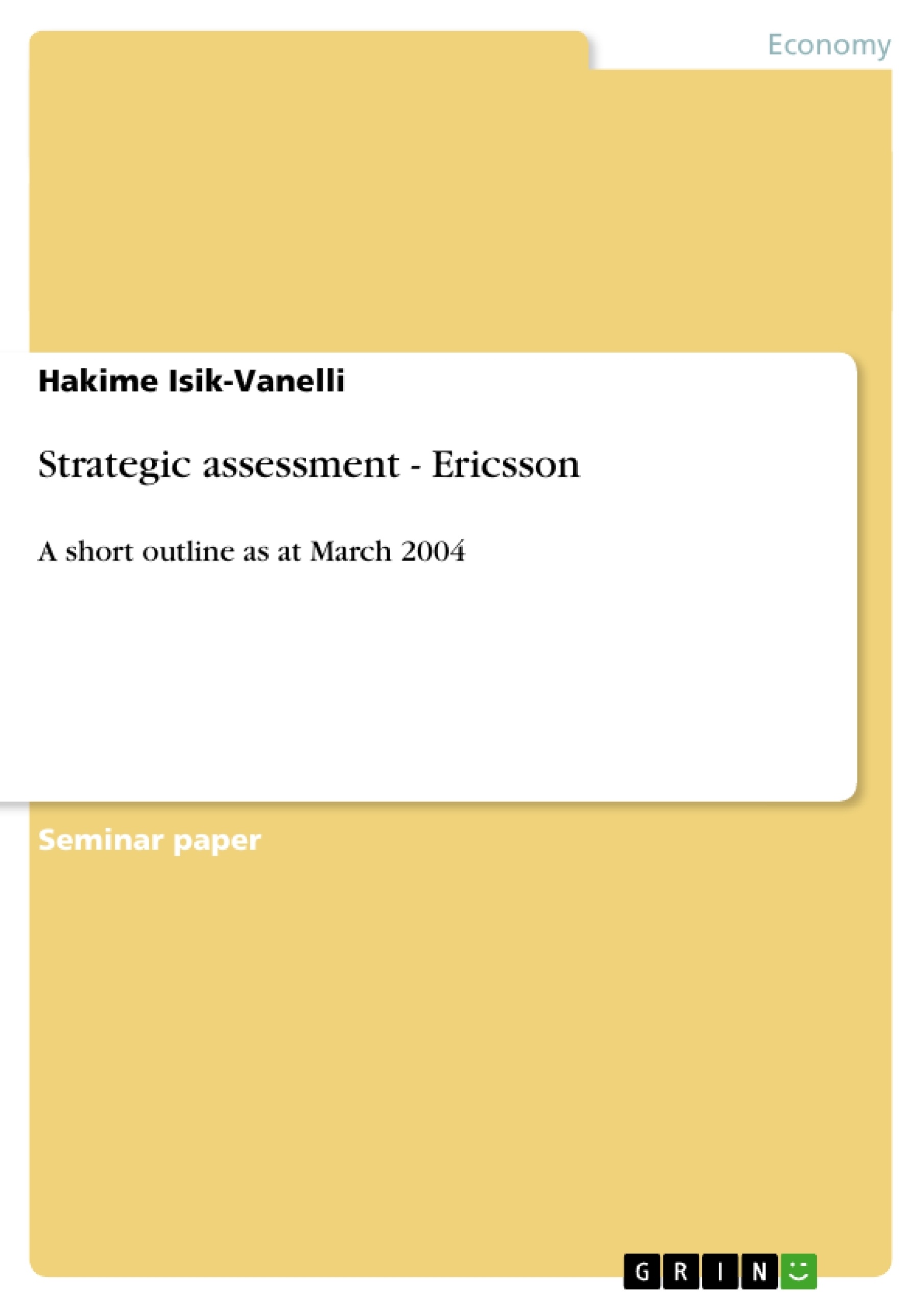Introduction
By the end of the eighties the old Swedish telephone company Ericsson stood strong. They had a diversified revenue income stream, operating in defence, radar and second in the world in landline telecom, after the American giant AT&T. Also, a little research project that had started in a lab outside Gothenburg had started to take off. This was wireless telecom and had been identified to have a huge market potential by top management. This new business demanded heavy investments in cutting edge technology but revenue came in from all parts of the firm and Ericsson had the investor’s confidence, backed by the two strongest business spheres in Sweden. At the same time there was a similar company in the neighbour country of Finland. Nokia, an old engineering company, offered similar products but had lived in the shadow of Ericsson. Wireless telecom took of and together with internet soon became the growth industry of the nighties. Every trader on Wall Street all by a sudden knew about these two companies from the remote north of Europe. In a rapidly growing market there was money to be made for all players in this field but when the stock market rally of the nineties was over, its little brother from Finland outperformed Ericsson. This paper will look at the strategic paths these companies took and why the smaller player managed to outperform the giant.
Focal firm
Lars Eric Ericsson founded Ericsson 1876. Ericsson has always been a technological driven company, usually with engineers as top management. Ericsson is a diversified company operating in defence, radar, telephone and wireless telephone. Although a diversified engineering company, Ericsson’s tremendous growth during the nineties comes from their expertise wireless telephoning. This includes mobile systems, components and mobile phones. The distinctive competence comes from their expertise in mobile systems. They were first with NMT (G1) and later with the GMS (G2) system currently in use. Ericsson is a company full of engineers and the engineering culture is deeply rooted within the company. It has always been in the forefront in mobile systems and R&D is a cornerstone in this company. However, it is not enough to be good at engineering.
Inhaltsverzeichnis (Table of Contents)
- Introduction
- Focal firm
- Competitor
- Competitive Analysis
- Strategic Issues
- Superior capacity
- Psychological Dominance
- Dynamic Control
- Conclusion
- References
Zielsetzung und Themenschwerpunkte (Objectives and Key Themes)
This paper examines the strategic paths taken by Ericsson and Nokia during the 1990s and explores why the smaller player, Nokia, outperformed the giant, Ericsson, in the rapidly growing wireless telecom market. The paper compares the strategies, market positions, and financial performance of both companies to highlight the factors that led to Nokia's success.
- Strategic Decision-Making and Market Dynamics
- Technological Expertise and Innovation
- Market Positioning and Consumer Focus
- Financial Performance and Investor Confidence
- Competitive Advantage and Market Share
Zusammenfassung der Kapitel (Chapter Summaries)
- Introduction: The paper sets the stage by highlighting the contrasting trajectories of Ericsson and Nokia in the late 1980s and early 1990s. It introduces the wireless telecommunications market and its rapid growth during this period, leading to the eventual dominance of Nokia over Ericsson.
- Focal Firm: This chapter provides a detailed overview of Ericsson, focusing on its historical context as a technology-driven engineering company with a diversified business portfolio. The chapter emphasizes Ericsson's expertise in mobile systems, its leadership in R&D, and its challenges in transitioning to the consumer mobile phone market.
- Competitor: This chapter examines Nokia's trajectory, highlighting its shift from a traditional engineering company to a leader in the wireless telecommunications market. It emphasizes Nokia's successful transition to the consumer market, its strong financial performance, and its strategic approach to gaining market share.
Schlüsselwörter (Keywords)
The primary keywords and focus topics of this paper are: wireless telecommunications, strategic analysis, competitor analysis, market dynamics, technological innovation, consumer electronics, financial performance, market share, Ericsson, Nokia.
- Arbeit zitieren
- MBA Hakime Isik-Vanelli (Autor:in), 2004, Strategic assessment - Ericsson , München, GRIN Verlag, https://www.hausarbeiten.de/document/26485


